კრის Grinter, on July 25th, 2011 This Monday I am departing from the usual Arctiinae for something completely different – a microlep! This is a Nepticulidae, Stigmella diffasciae, and it measures in at a whopping 6 mm. I can’t take credit for spreading this moth – all of the nepticulids I have photographed are from the California Academy of Sciences and spread by Dave Wagner while he was here for a postdoctorate position.
The caterpillars mine the upper-side of the leaves of Ceanothus and are known only from the foothills of the Sierra Nevada in California. If you’re so inclined the revision of the North American species of the genus is freely available here (.pdf).
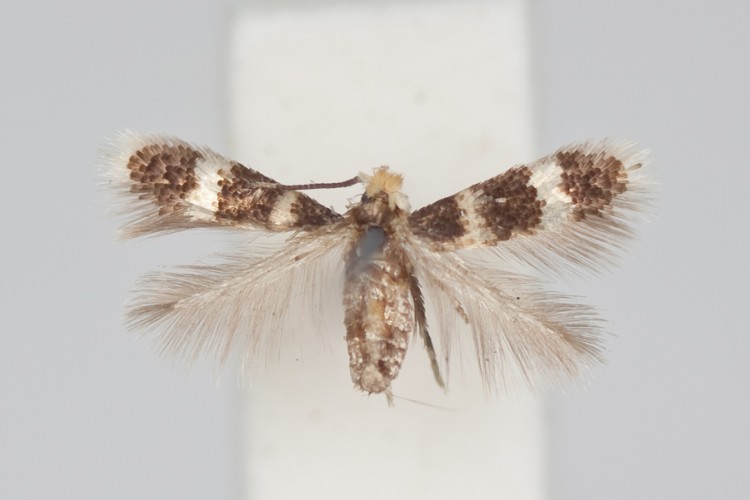 Stigmella diffasciae (ნეპტიკულიდები)
კრის Grinter, 22 ივლისი, 2011 ეს იყო ცოტა ხნის, რადგან ბოლო GOP გამოწვევა, მაგრამ ეს არის რბილი ბურთი. მე იმ იმედით, რომ ისინი უბრალოდ ძალიან ზარმაცი იპოვოს უფრო შესაფერისი იმიჯი…

კრის Grinter, on July 19th, 2011 What would Jesus do if he had some free time – maybe cure a disease, end a war, or feed the starving – but nah, everyone sees that coming. Why not shock them to the core – burn your face on a Walmart receipt! Მინიმუმ, that’s what a couple in South Carolina believe to have found, ა Walmart receipt with Jesus’s face on it. This isn’t exactly new or exciting, humans have a wonderful ability to recognize a face in just about anything. Jesus and other characters “appear” on random things all the time, and even in 2005 a shrine was built to the Virgin Mary around a water stain in a Chicago underpass.
Pareidolia anyone? რეალურად, that face looks pretty convincing, I’m not too sure this wasn’t just faked or “enhanced”. The closeups even look like there are fingerprints all over it. Since I don’t have a walmart anywhere near me or a walmart receipt on hand I can’t determine how sensitive the paper is and how easy it would have been to do – but how long do you think before it shows up on ebay? Ნებისმიერ შემთხვევაში, it looks much more like James Randi to me than Jesus (at least we actually know what Randi looks like!).
 from CNN
კრის Grinter, 18 ივლისს, 2011 Over on Arthropoda, fellow SFS blogger Michael Bok shared an image of his field buddy, Plugg the green tree frog. My first thought was of a similar tree frog that haunted welcomed me everywhere I went in Santa Rosa National Park, კოსტა რიკის. Needless to say, Costa Rica instills a sudden habit of double checking everything you are about to do. This species is known as the milk frog (Phrynohyas venulosa) for their copious amounts of milky white toxic secretions. One of the first stories Dan Janzen told me while while I was with him at Santa Rosa was about this species – and accidentally rubbing his eye after holding it. Thankfully the blindness and burning was only temporary.
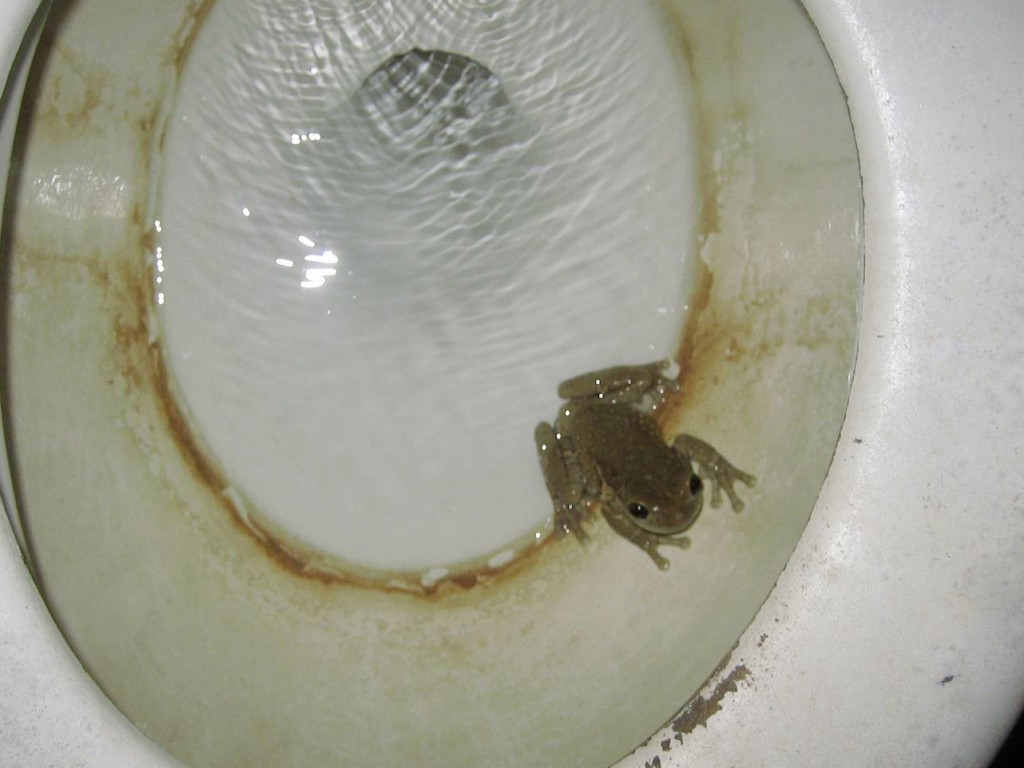 Milk Frog: Phrynohyas venulosa
კრის Grinter, 18 ივლისს, 2011 მე შენარჩუნება ბურთი მოძრავი ერთად Arctiinae და პოსტი ფოტო დღეს Ctenucha brunnea. ამ moth შეიძლება იყოს საერთო მაღალი ბალახები ერთად პლაჟები საწყისი სან ფრანცისკოს LA – მიუხედავად იმისა, რომ ბოლო ათწლეულების განმავლობაში ნომრები ამ moth უკვე შემცირდა ჰაბიტატის განადგურება და შეჭრა სანაპიროზე ბალახის (ამოფილა არენარია). მაგრამ არსად არსებობს დგას გიგანტური ryegrass (Leymus condensatus) თქვენ უნდა იპოვოთ ათობით ამ თვის საფრენი სიცხე ან nectaring on TOYON.
 Ctenucha brunnea (არებედები: Arctiinae)
კრის Grinter, 12 ივლისს, 2011 ისევე, როგორც თქვენ შეიძლება არ მიხვდა სათაური არ არის შოკისმომგვრელი, როგორც ჩემი სათაური ვარაუდობს, მაგრამ მე ვერ დაეხმარება, მაგრამ დაიძაბება საწყისი Guardian სტატია. მე ნამდვილად ის იუმორისტული როცა გვხვდება არაფერი, რომელიც ამბობს, მეცნიერები “განცვიფრებული”, “baffled”, “შოკირებულია”, “გვაწუხებს”, – ვფიქრობ, რომ ეს თემა სხვა დროს… მიუხედავად ამისა, ნამდვილად cool butterfly has emerged at the “Sensational Butterflies” exhibit at the British Museum in London – a bilateral gynandromorph! The Guardian reports today that this specimen of Papilio memnon just emerged and is beginning to draw small crowds of visitors. I know I’d love to see one of these alive again – although the zoo situation would take away quite a bit of the excitement. I think the only thing more exciting than seeing one of these live in the field would be to net one myself!
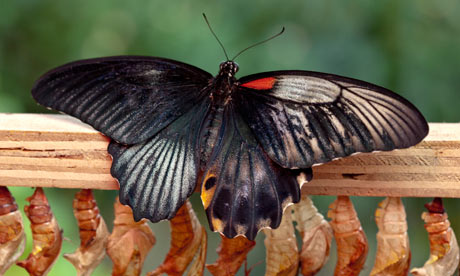
One little thing tripped my skeptical sensors and that is the quote at the end of the article taken from the curator of butterflies, Blanca Huertas. “The gynandromorph butterfly is a fascinating scientific phenomenon, and is the product of complex evolutionary processes. It is fantastic to have discovered one hatching on museum grounds, particularly as they are so rare.”
კარგად, I don’t specifically see how these are a “product of … evolutionary processes” inasmuch as ყველა life in ყველა forms is a product of evolution. These are sterile “glitches” that are cool, but not anything that has been specifically evolved for or against. Perhaps it would be more adept to call this a fascinating process of genetics (which the article actually describes with accuracy). ასევე – butterflies emerge as adults and hatch as caterpillars – but that’s just me being picky.
კრის Grinter, 11 ივლისს, 2011 დღევანდელ moth არის ლამაზი და იშვიათი სახეობის SE Arizona და მექსიკაში: Lerina განხორციელებულია (არებედები: Arctiinae). ისევე როგორც მრავალი სხვა დღეს საფრენი სახეობების ის საოცრად ფერადი და საკმაოდ სავარაუდოა aposematic. შემდეგ ყველა, მასპინძელი ქარხანა არის milkweed და მუხლუხა ისეთივე განსაცვიფრებელი (ქვემოთ).
 Lerina განხორციელებულია (არებედები: Arctiinae)
This image of an old, spread specimen hardly does the animal justice, but one lucky photographer found a female ovipositing at the very top of a hill outside of Tucson, Arizona. While you’re at it go check out some of Philip’s other great photographs on SmugMug.
 Lerina განხორციელებულია - Philip Kline, BugGuide As I mentioned above this moth also has an equally impressive caterpillar that feeds on Ascleapias linaria (pineneedle milkweed).
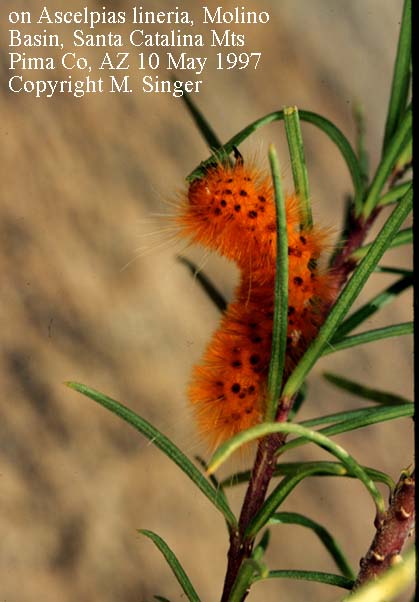
კრის Grinter, ივლისი -5, 2011 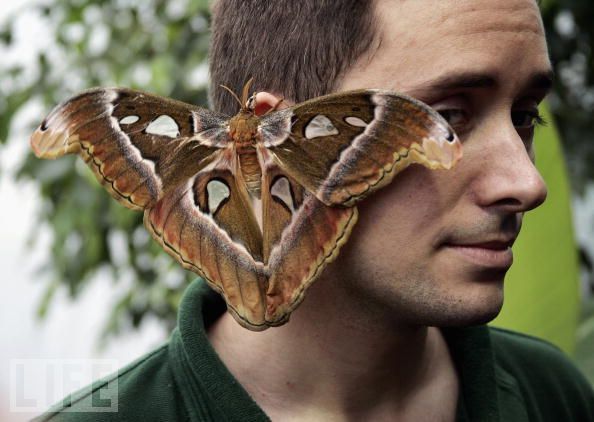
როგორც ჩანს, არ არის უპირატესობის ქალაქური ლეგენდები, რომ ჩავრთოთ მწერები მცოცავი ჩვენი სახეები ხოლო ჩვენ ძილის. ყველაზე ცნობილი მითი არის რაღაც გასწვრივ ხაზი “ჭამთ 8 ობობები წელიწადში, ხოლო საძილე“. რეალურად, როცა google რომ ნომერი მერყეობს 4 8… up to a pound? Not surprising things get so exaggerated online, especially when it concerns the ever so popular arachnophobia. I doubt the average American eats more than a few spiders over their entire lifetime; your home simply shouldn’t be crawling with so many spiders that they end up in your mouth every night! A similar myth is still a myth but with a grain of truth – that earwigs burrow into your brain at night to lay eggs. It isn’t true that earwigs are human parasites (საბედნიეროდ), but they do have a predisposition to crawl into tight, damp places. It is possible that this was a frequent enough occurrence in Ye Olde England that the earwig earned this notorious name. Cockroaches have also been documented as ear-spelunkers – but any crawly insect that might be walking on us at night could conceivably end up in one of our orifices.
I have however never heard of a moth crawling into an ear until I came across this story today! I guess a confused Noctuid somehow ended up in this boy’s ear, although I can’t help but to wonder if he put it there himself… Moths aren’t usually landing on people while they are asleep nor are they that prone to find damp, tight spots. But then again anything is possible, some noctuids do crawl under bark or leaves in the daytime for safe hiding. I even came across another story of an ear-moth form the UK (not that the Daily Mail is a reputable source).
ბუნებრივია, some lazy news sources are using file photos of “თვის” instead of copying the photo from the original story. It’s extra hilarious because one of the pictures used is of a new species of moth described last year by Bruce Walsh in Arizona. ლითოფანე ლიეა has been featured on my blog twice before, but never like this!
On a closing note here is a poem by Robert Cording (also where the above image was found).
Consider this: a moth flies into a man’s ear
One ordinary evening of unnoticed pleasures.
When the moth beats its wings, all the winds
Of earth gather in his ear, roar like nothing
He has ever heard. He shakes and shakes
His head, has his wife dig deep into his ear
With a Q-tip, but the roar will not cease.
It seems as if all the doors and windows
Of his house have blown away at once—
The strange play of circumstances over which
He never had control, but which he could ignore
Until the evening disappeared as if he had
Never lived it. His body no longer
Seems his own; he screams in pain to drown
Out the wind inside his ear, and curses God,
Who, hours ago, was a benign generalization
In a world going along well enough.
On the way to the hospital, his wife stops
The car, tells her husband to get out,
To sit in the grass. There are no car lights,
No streetlights, no moon. She takes
A flashlight from the glove compartment
And holds it beside his ear and, unbelievably,
The moth flies towards the light. His eyes
Are wet. He feels as if he’s suddenly a pilgrim
On the shore of an unexpected world.
When he lies back in the grass, he is a boy
ისევ. His wife is shining the flashlight
Into the sky and there is only the silence
He has never heard, and the small road
Of light going somewhere he has never been.
– Robert Cording, Common Life: Poems (Fort Lee: CavanKerry Press, 2006), 29–30.
კრის Grinter, 30 ივნისს, 2011 
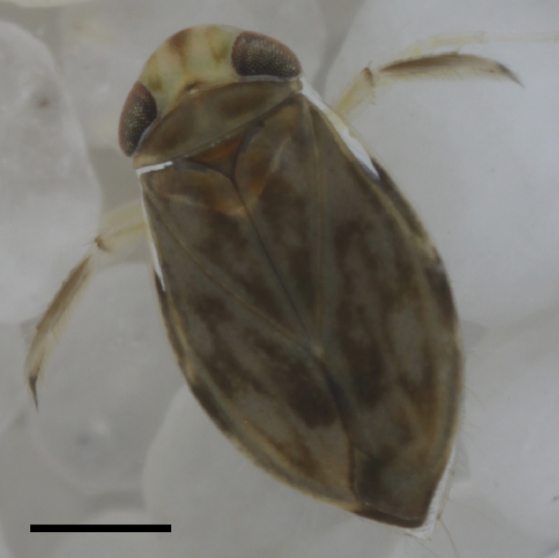 Micronecta Scholtz მთებში ევროპის სოფლის ცოცხლად გუნდი სასიყვარულო, ყვირილი, მამრობითი წყლის შეცდომები. პატარა მწერების ზემოთ, Micronecta Scholtz (Corixidae), ზომების at უზარმაზარი 2.3mm და ამჟამად აწარმოებს დაჭერით / buzzing ხმის ადვილად ისმის ადამიანის ყურის ზემოთ წყლის ზედაპირზე. იმისათვის, რომ პერსპექტივაში,: ცდილობს მესმის ვინმე განხილვა წყალქვეშა ხოლო იდგა აუზი თითქმის შეუძლებელია, ამჟამად ამ წუთში insect ქმნის click ხმამაღალი საკმარისი ცდება ხმელეთის ფეხსახსრიანების. მიუხედავად იმისა, რომ არ ჟღერდეს ძალიან შთამბეჭდავია, როცა ჩვენ გარშემორტყმული სხვა ხმაურიან მწერების მსგავსად cicada, M. შოლცი აღმოჩნდება საოცრად ხმამაღალი ცხოველთა როდესაც თქვენ გაითვალისწინოს სხეულის ზომა და საშუალო ხმის პროპაგანდის მეშვეობით მიღწევა ჩვენი ყური. შევიდა ნომრები ინტენსივობის დაწკაპუნებით წყალქვეშა შეუძლია მიაღწიოს მდე 100 დბ (ხმის აწევის სიმაღლე, SPL). შემცირება ჩვენს მწერების მსოფლიოში და ეს ხმის წარმოება ტოლია jackhammer იგივე მანძილი! ასე რომ, რა ღმერთი დაუშვა პატარა შეცდომა, რომ ეს ხმაური და მიიღოს away მასთან სავსე სამყაროში მტაცებლის?
ავტორები, ბუნებრივია, აღვნიშნო გასაკვირი ეს შედეგი. პირველი, რაც ხდება, არის ის, რომ წყლის boatmen უნდა არ აუდიტორია predators, რადგან ისინი ძირითადად საცურაო გარშემო მიღების ყველაზე ხმაური ფიზიკურად შესაძლებელია ნებისმიერი პატარა ცხოველი სადმე. მართლაც, ეს არ არის ძალიან გასაკვირი, რადგან საუკეთესო წყალქვეშა predators მკაცრად ვიზუალური მონადირეები (ჭრიჭინა larvae, წყლის შეცდომები და beetles და ა.შ.…). ეს ძალიან სავარაუდოა, რომ სექსუალური შერჩევა ხელმძღვანელობს განვითარების ამ stridulatory ზარები, როგორიცაა astounding დონეზე. მეორე, ყველაზე გასაკვირი ის არის ნათელი კიდევ გრაფიკულად, თუ რამდენად ხმამაღალი ეს მწერები ნათესავი მათი სხეულის ზომა. ზედა გრაფაში არის bottlenose dolphin (თ. truncated) თავისი ცნობილი sonar. მაგრამ ყველაზე დიდი განსხვავებულ რეალურად ჩვენი პატარა მწერის ქვედა მარცხენა ძალიან მაღალი თანაფარდობა ხმის და სხეულის ზომა (31.5 ერთად საშუალება 6.9). არსებობს სხვა ცნობილი ცხოველთა მოდის ახლოს. ეს არის გამორიცხული, მიუხედავად იმისა, რომ შემდგომი გამოკვლევა სხვა წყლის მწერები შეიძლება გამოიღო მსგავსი თუ არა უფრო გასაკვირი შედეგები!
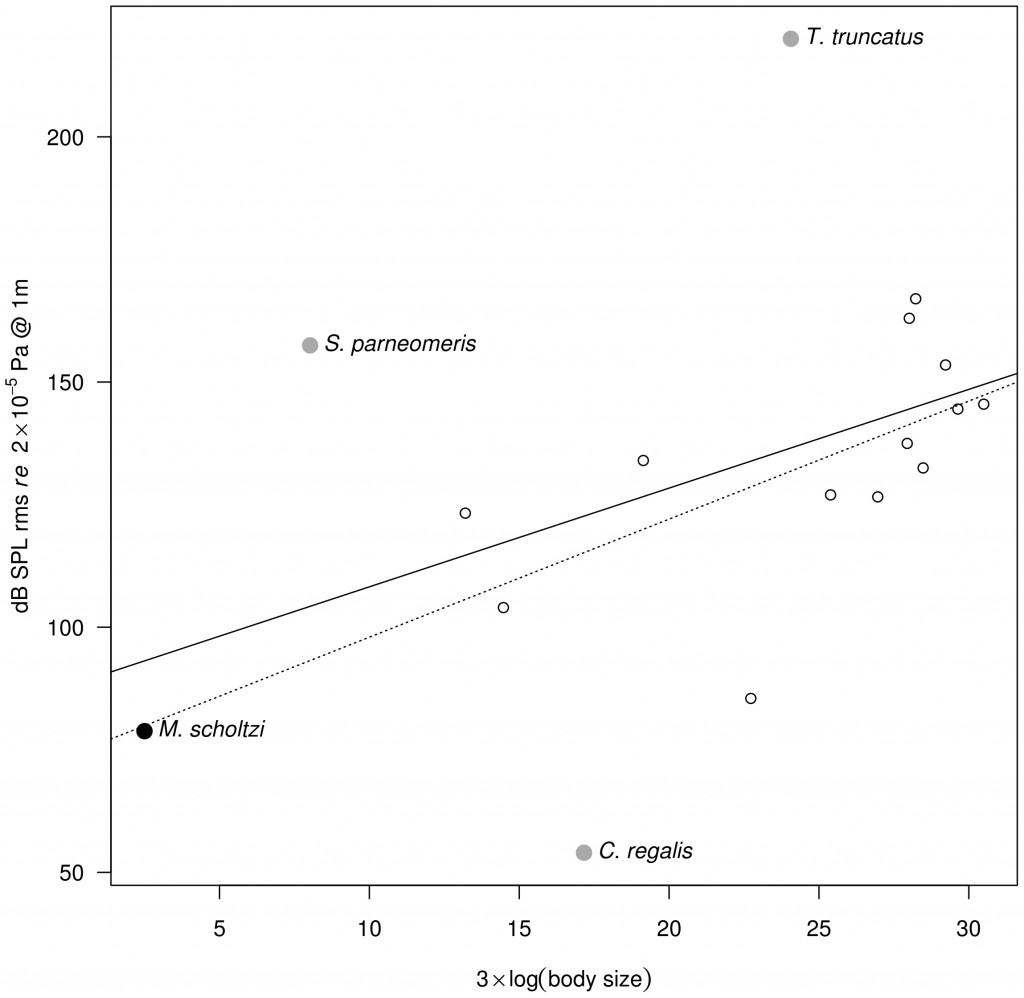
უფრო ზუსტი შესახებ “ყვირილი”, შეცდომები (შეცდომები ამ შემთხვევაში არის სწორი; Corixidae ეკუთვნის რათა Hemiptera – ნამდვილი შეცდომები) სავარაუდოდ, არის stridulating – rubbing ერთად ორ ნაწილად ზოგადად ხმის ნაცვლად exhaling საჰაერო, დარტყმა, და ა.შ.… სტატიაში ავტორები ფიქრობს, რომ “ხმა წარმოებული rubbing pars stridens მარჯვენა paramere (სასქესო ორგანოების დანამატების) წინააღმდეგ ქედის მარცხენა წილის მერვე მუცლის სეგმენტი [15]”. გარეშე უბიძგებენ მათ ციტირების, ჩანს, რომ stridulation მამაკაცი გვარის კარგად დოკუმენტირებული mate მოზიდვას. და როგორც თქვენ მოელოდა, საინფორმაციო საშუალებების და მეცნიერების ჟურნალისტებს წაკითხული “სასქესო ორგანოების დანამატების” და თარგმნოს, რომ penis: და თქვენ დასრულდება up ისტორიები მოსწონს ეს. ფუნქცია parameres შეიძლება თავისუფლად თარგმნილი მსგავსი ქვედა ყბა, რომ ისინი დაპირისპირებულ სტრუქტურები (როგორც წესი, შეიარაღებული თმას) განთავსების ისაა. The ზუსტი გამოყენება, მათ, შესაძლოა, განსხვავდება სახეობების ან თუნდაც ბრძანებებს, მაგრამ ისინი ძალიან მკაფიო სახით penis (= Aedeagus) მას შემდეგ, რაც ისინი უბრალოდ ეხმარება მომდგარი და არ გამოაქვეყნებს ნებისმიერი სპერმის. ასე რომ, რეალურად, თქვენ გაქვთ გენიტალური “სამაგრები” ერთად “ყვირილი პარტია”. და საუკეთესო ილუსტრაციაა pars stridens დასრულდა ძველი წაკითხვა Archetype. ეს სტრუქტურა არის ასახული ქვემოთ ყვითელი (და ხდება არსებობა მუცლის საქართველოს ant). მაგრამ მოკლედ – ეს რეგულარული grooved ზედაპირზე akin რომ washboard. საბოლოოდ, სასჯელის ციტირებული ზემოთ უნდა იყოს თარგმნილი “ორი სტრუქტურების წვერი მუცლის რომ RUB ერთად მინდა ორი თითი მიბმის”.
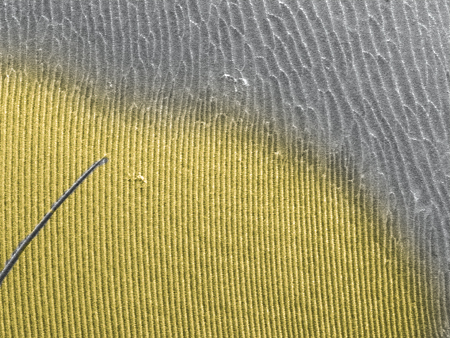 დეტალურად pars stridens (ყვითელი) მეოთხე მუცლის tergite წელს Pachycondyla villosa თანამშრომელი (სკანირება Electron micrograph, Roberto Keller / AMNH) Continue reading The incredibly loud world of bug sex
კრის Grinter, 20 ივნისს,, 2011 მე ვაპირებ შენარჩუნება ბურთი მოძრავი ერთად ამ სერიის და ცდილობენ, რათა ის უფრო რეგულარული. მე ასევე ფოკუსირება შეფერადება ახალი სახეობების ყოველ კვირას მასიური კოლექციები აქ კალიფორნიის მეცნიერებათა აკადემიის. ეს უნდა მომეცი საკმარისი მასალა… მინიმუმ რამდენიმე ასეული წლის.
 გრამია ედვარდსი (არებედები: Arctiinae) ამ კვირის ნიმუში არის ვეფხვის ჩრჩილი გრამია ედვარდსი. რამდენიმე წლის წინ თითების ეს ოჯახი ითვლებოდა Noctuidae-სგან დამოუკიდებლად – მაგრამ ბოლო მოლეკულური და მორფოლოგიური ანალიზი აჩვენებს, რომ ის სინამდვილეში არის ნოქტუიდი. არებედების ოჯახი გამოიყვანეს Noctuidae-დან და იქ მოათავსეს Arctiidae., მათი გადაქცევა Arctiinae ქვეოჯახად. OK მოსაწყენი ტაქსონომია გამორიცხულია – საერთო ჯამში, ეს მშვენიერი ჩრჩილია და მის შესახებ თითქმის არაფერია ცნობილი. ეს ნიმუში შეგროვდა სან-ფრანცისკოში 1904 – სინამდვილეში ამ სახეობის თითქმის ყველა ნიმუში შეგროვდა ქალაქში საუკუნის ბოლოს. მიუხედავად იმისა, რომ ეს ჩრჩილი ძალიან ჰგავს უხვად და ფართოდ გავრცელებულს მორთული გრემი, თვალების მჭიდრო ანალიზი, ფრთების ფორმა და ანტენები ამტკიცებენ, რომ ეს რეალურად ცალკე სახეობაა. მე მჯერა, რომ ბოლო ნიმუში შეგროვდა დაახლოებით 1920-იან წლებში და მას შემდეგ აღარ უნახავთ. სავარაუდოა და სამწუხაროა, რომ ეს ჩრჩილი შეიძლება გადაშენებულიყო ბოლო დროს 100 SF Bay რეგიონის განვითარების წლები. გრამია, და საერთოდ Arctiinae, არ არის ცნობილი მასპინძლის სპეციფიკის მაღალი დონით; ისინი პატარა ძროხებს ჰგვანან და თითქმის ყველაფრით იკვებებიან გზაზე. ასე რომ, გასაკვირი რჩება, რატომ არ ექნებოდა დღეს ამ ჩრჩილს ჰაბიტატი, თუნდაც ასე ძლიერ შეწუხებულ ქალაქში. შესაძლოა, ეს ჩრჩილი სპეციალიზირებული იყო ყურის მიმდებარე მარილიან ჭაობებში – რომლებიც მას შემდეგ მთლიანად განადგურდა უძრავი ქონების ნაგავსაყრელის გამო (1/3 მთელი ყურე დაიკარგა შესავსებად). ან იქნებ ეს ჩრჩილი დღესაც რჩება ჩვენთან, მაგრამ არასოდეს გროვდება, რადგან ეს არის მორიდებით მფრინავი სახეობა. გაზაფხულზე ყოველთვის ვადევნებ თვალს პარკში პატარა ნარინჯისფერი დაბინდვისთვის…
|
სკეპტიციზმის
|














